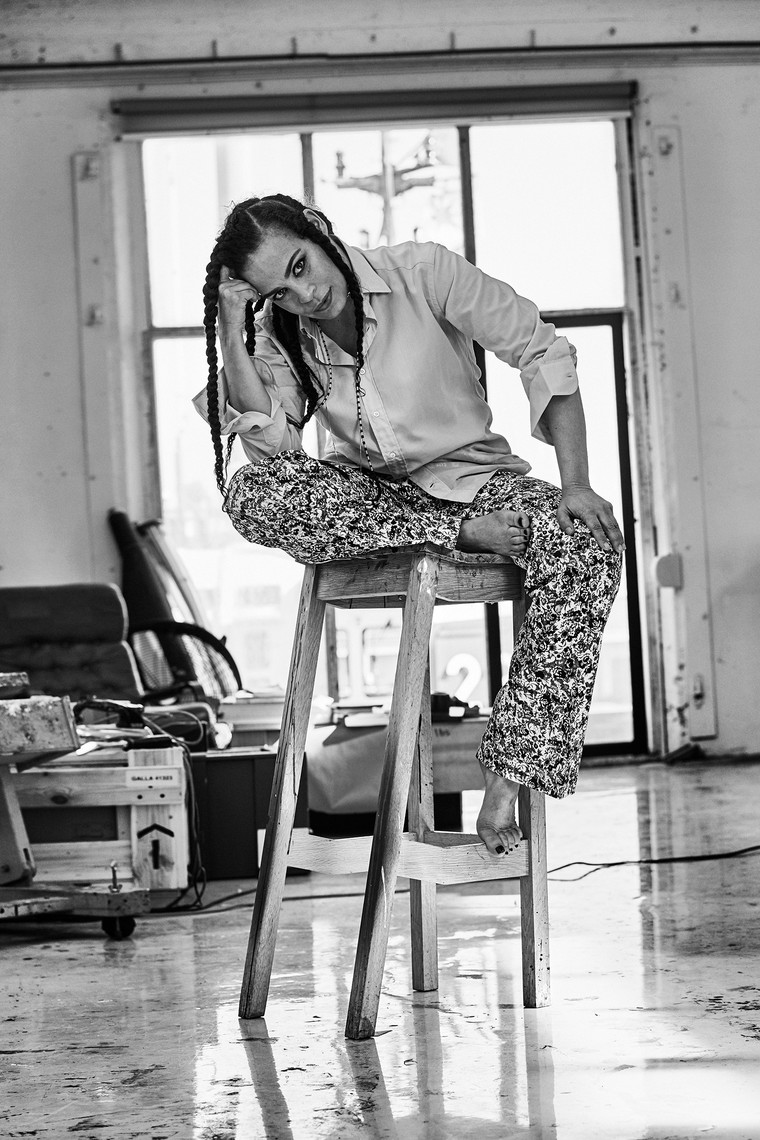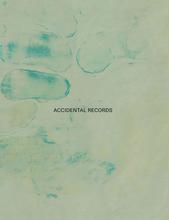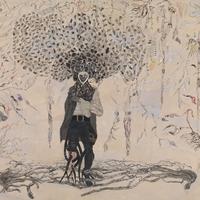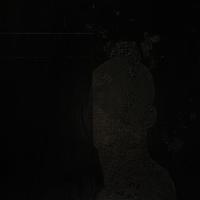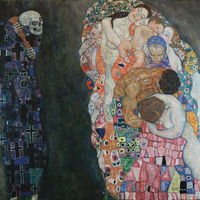More about Ellen Gallagher
- All
- Info
- Shop
Works by Ellen Gallagher
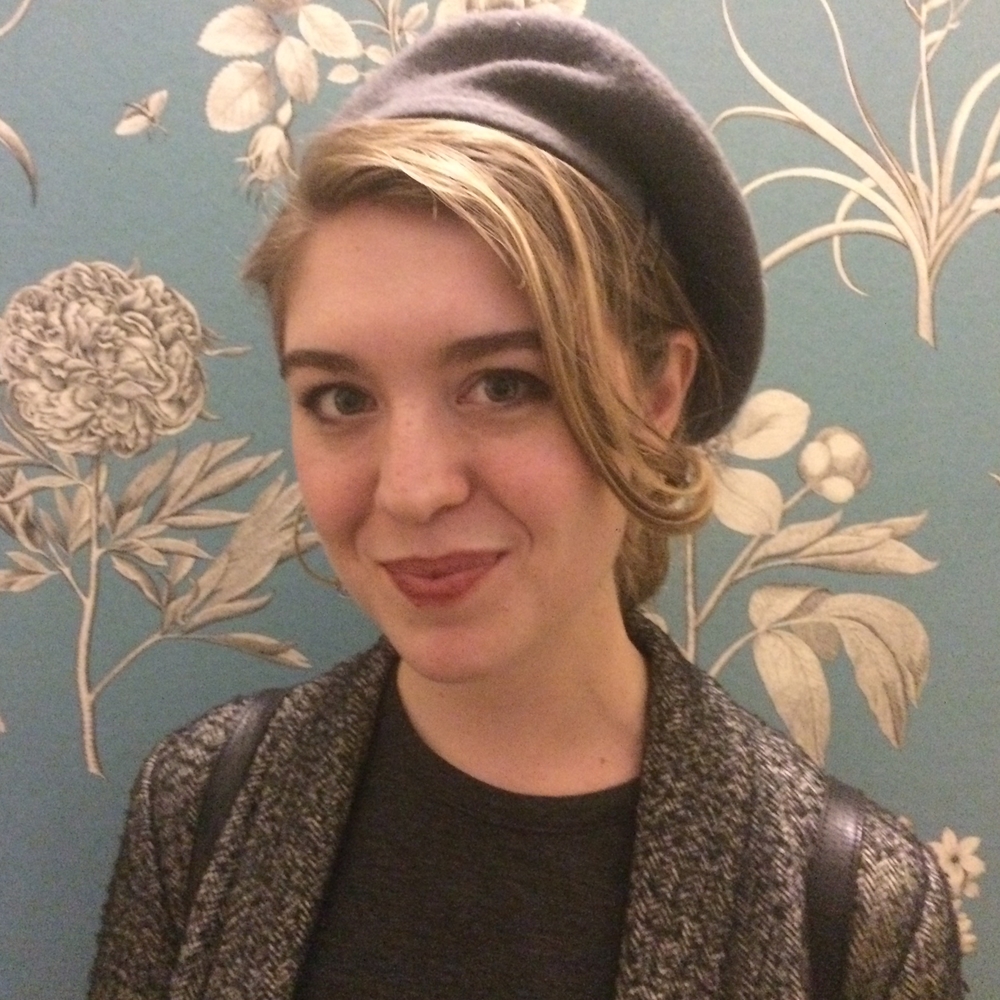
Contributor
Delving into themes as diverse as oceanography, Moby-Dick, the poetry of Gertrude Stein, and the history of the Atlantic slave trade, Ellen Gallagher’s art is as surprising as it is beautiful.
Born in 1965 in Providence, Rhode Island to an Irish-American mother and a father of Cape Verdean descent, Gallagher began studying creative writing at Oberlin College at the precocious age of 16 before having a change of heart, dropping out, doing a brief stint as a carpenter in Seattle, and then working as a commercial fisherman in Alaska and Maine. Deciding that she’d much rather paint fish than catch them, she eventually went back to school to earn a fine arts degree from the School of the Museum of Fine Arts in Boston in 1992. The decision was borne in part from a semester she spent aboard a research vessel in the Caribbean as part of an oceanography course, studying celestial navigation and sketching pteropods (aka, wing-footed snails: adorable, microscopic, opalescent snails that literally fly through the water on tiny wings and look, to use Gallagher’s own words, “just like butterflies”). She loved drawing these cute little guys so much that it inspired her to go to art school, using her pteropod sketches as her application materials.
The trip clearly made a huge impression on young Ellen, and sea-creatures of all kinds have been resurfacing in her work ever since. In her Watery Ecstatic series (2001-), for example, she depicts an ecosystem of strange oceanic creatures both real and imagined, some done in watercolor and some carved with a scalpel’s precise lines into thick sheets of white watercolor paper. The latter technique she likens to whales' scrimshaw of the 18th and 19th centuries: intricate carvings etched into the bones and teeth of whales. Whales and whaling are themes that recur throughout Gallagher’s work; her 2010 film installation Osedax, for example, explores the phenomenon of whale fall, or the ecosystems that form when a whale dies and its carcass sinks, eventually settling on the ocean floor and providing food for the creatures that live there for thousands of years. Many species who live on whale falls are thought to exist exclusively in that habitat, like the osedax, or “bone-eating” worm (also referred to, charmingly, as the “zombie worm”) for which the installation is named. Several of Gallagher’s works also make reference to Herman Melville’s Moby-Dick, featuring a recurring “Pegleg” character who is inspired, in part, by Captain Ahab.
While she was still an art student in Boston, Gallagher joined the Dark Room Collective, a group of African American poets living and working in nearby Cambridge. Starting out as a small group of writers who regularly hosted poetry readings in a rambling Victorian house in Inman Square, they eventually expanded to incorporate musical performances, art shows, and writing workshops, at which point Gallagher became their art coordinator. The poet Cornelius Eady has admiringly described the collective’s readings as something halfway between “a Sunday Revival meeting” and “a salon,” recounting how a “crowd showed up (I couldn’t tell who actually lived there and who didn’t), some furniture got moved, some chairs unfolded, and pow! Their living room turned into a salon...that’s how they all seemed to take it: with a serious joy and pride in their belief in being black and being wordy, which totally disarmed me.” It was this attitude, as well as the medium of poetry itself, which inspired Gallagher to start exploring her biracial background in her art. “I was so frustrated,” she recalls, “I was so jealous of the poets, because there was a way in which what they were doing was both abstract and really lucid.”
Spurred on by her admiration for her friends’ literary talents (and maybe, just maybe, by some unrealized dreams of becoming a writer herself) it was during this period that Gallagher started to experiment in earnest with the translation of the poetic form into a visual medium, taking the repetitive poetry of Gertrude Stein (think “a rose is a rose is a rose is a rose,” that oft-quoted line from her 1913 poem “Sacred Emily”) as her model. “I was in my father’s neighborhood in Providence, Rhode Island,” she recounts in one interview, “[and] I was walking through this neighborhood which had been somewhat decimated by highway construction, and what had once been a playground with a swimming pool, where my cousin had been the lifeguard and I had learned to swim, was now emptied out…I found a piece of paper that had been perfectly folded up, and it said, ‘We are a drug-free school. Have a nice day.’ It was penmanship paper, with a smiley face, and that just seemed so poignant to me. I took it back to my studio and kept it.” This penmanship paper became the basis for her Oh! Susanna series, with which her artistic career really started to take off in the mid-1990s. Exploring the formation of racial stereotypes in the U.S., Oh! Susanna features the “blubber mouths” and “popping eyeballs” typical of racist blackface caricatures popularized in the vaudevillian minstrel shows of the 19th century, reproduced again and again across the lines of the paper like shakily-formed letters of a child just learning how to write. In her use of a rigidly geometric base of penmanship paper, her aim was to communicate the “ordering principles” which she sees as underlying the formation of racial stereotypes in American society.
Literature continues to inform Gallagher’s work today, though she’s largely moved away from her focus on Stein-esque repetition into a more densely-layered aesthetic centered on oceanic themes. She’s cited her influences as including the writings of Aimé Césaire, the poetry of Langston Hughes, and Philip Hoare’s 2008 book Leviathan. Her aesthetic has also been influenced by the minimalist paintings of Agnes Martin. Describing the difference between reading a book and “reading” a painting, Gallagher muses: “When you’re reading a magazine or a book, that’s a particular kind of reading, it’s kind of sequential, page by page…And the reading of a painting…what I loved was this idea of opening up the pages so that your sequence was then more spatial, rather than sequential. In the paintings, there are characters that repeat, and recur.” This recurrence or resurfacing of characters and themes is something that is key to understanding Gallagher’s complex visual language; it also aligns her pictures with the thought-patterns of poetry. Themes sink and reemerge not just across a single canvas (as in her Oh! Susanna series), but also across artworks and even series, creating a highly personal, visual-poetic mythology that links her pictures together into something almost organic.
Gallagher’s father was a professional boxer (though, as Gallagher has been known to quip, not a particularly good one), leaving his family when both Ellen and her sister were still young children. But despite his absence, her father’s ancestry forms a central concern of much of her work. Soft, watery forms, archipelagos, pirates, and fantastical sea-creatures populate many of her pictures, speaking to her fascination both with oceanography and with Cape Verde’s history. Some, such as her monumental multimedia work Bird in Hand (2006), make direct reference to the history of the Atlantic slave trade, in which Cape Verde played a key role due to its central location between Africa and the Americas. Her interest in whaling can also be linked to her father’s heritage; in the 18th and 19th centuries, many Cape Verdeans joined the crews of American whaling vessels passing through Cape Verde on their way to the southern capes of Africa, in this way making their way to the US, where they stayed for generations. In fact, the stretch of the Atlantic between Cape Verde and the United States could be described as the central concern of much of Gallagher’s art. Whether she’s addressing the microscopic creatures living in a whale fall or the horrors of the Atlantic slave trade, she returns time and again to this space in her work, creating a visual language with which to express an unspeakable history.
Sources
- “Below the Surface: Ellen Gallagher in Conversation with Adrienne Edwards,” Gagosian Quarterly, April 30, 2017, https://education.issuu.com/gagosianquarterly/docs/ zmag_17.04.25/110.
- Bloomberg QuickTake Originals. “Painting Beyond Painting: Ellen Gallagher | Brilliant Ideas Ep. 10.” YouTube video. 24:13. https://www.youtube.com/watch?v=Yb3o3QYSXtU&t= 190s.
- “A Brief Guide to the Dark Room Collective.” Poetry.org. Accessed August 11, 2020. https://poets.org/text/brief-guide-dark-room-collective.
- “Cape Verdean Maritime Exhibition.” New Bedford Whaling Museum. Accessed August 12, 2020. https://www.whalingmuseum.org/explore/exhibitions/current/cape-verdean- maritime.
- “Characters, Myths, and Stories,” Art21, accessed August 11, 2020, https://art21.org/read/ ellen-gallagher-characters-myths-and-stories/.
- “Ellen Gallagher, Bird in Hand, 2006.” Tate. Accessed August 12, 2020. https://www.tate.org.uk/ art/artworks/gallagher-bird-in-hand-t12450.
- “Ellen Gallagher - Ichthyosaurus.” Freud Museum London. Accessed August 10, 2020. https://www.freud.org.uk/exhibitions/ellen-gallagher-ichthyosaurus/.
- “Ellen Gallagher, Oh! Susanna, 1995.” MoMA. Accessed August 12, 2020. https://www.moma. org/collection/works/79521.
- Groetzinger, Kate. “Aquatic Acrobatics: Miniature sea snails ‘fly’ gracefully underwater like winged insects.” Quartz. February 19, 2016. https://qz.com/619576/miniature-sea-snails- gracefully-fly-underwater-like-winged-insects/
- McGee, Celia. “Up and Coming: Ellen Gallagher; An Artist Who Doesn’t Fit In Gets the Perfect Offer: a Solo.” The New York Times. January 7, 1996. https://www.nytimes.com/1996/ 01/07/arts/up-coming-ellen-gallagher-artist-who-doesn-t-fit-gets-perfect-of
- “Profile: Ellen Gallagher (1965-).” Black Art Story. Accessed August 11, 2020. https://blackartstory.files.wordpress.com/2020/06/morphia.jpg?w=640&h=7….
- Vrijenhoek, Robert C. “Whale falls — islands of abundance and diversity in the deep sea.” Monterey Bay Aquarium Research Institute. December 20, 2002. https://www.mbari.org/ whale-falls-islands-of-abundance-and-diversity-in-the-deep-sea/.
Featured Content
Here is what Wikipedia says about Ellen Gallagher
Ellen Gallagher (born December 16, 1965) is an American artist. Her work has been shown in numerous solo and group exhibitions and is held in the permanent collections of many major museums. Her media include painting, works on paper, film and video. Some of her pieces refer to issues of race, and may combine formality with racial stereotypes and depict "ordering principles" society imposes.
Check out the full Wikipedia article about Ellen Gallagher

